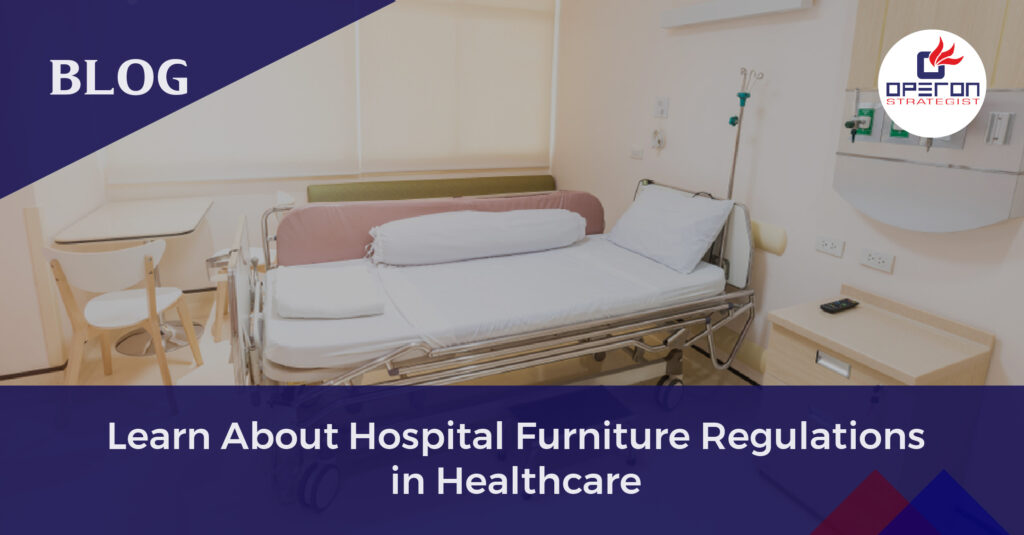An Overview : Hospital Furniture Regulations
Hospital furniture regulation in healthcare ensures that furniture used in medical facilities meets safety, quality, and functionality standards. These regulations cover aspects such as fire safety codes, weight-bearing capacities, infection control measures, and ergonomic guidelines. Compliance with these regulations is crucial to ensure a safe and comfortable environment for patients, healthcare providers, and staff. By adhering to hospital furniture regulations, healthcare facilities can mitigate risks, enhance patient care, and maintain a high standard of safety and quality in their furniture selection and setup. ISO 13485 is one of the major safety standards for medical devices. So, go through our service page for ISO 13485 Certification.
Looking for Hospital Furniture Regulatory Consultant?
How To Design and Set up Hospital Furniture?
To design and set up hospital furniture:
- Assess needs and space constraints.
- Plan layout for patient flow and accessibility.
- Select appropriate furniture based on comfort, durability, and compliance.
- Ensure safety and regulatory compliance.
- Prioritize patient comfort and recovery.
- Enhance infection control with easy-to-clean materials.
- Collaborate with professionals for expertise.
- Test and evaluate for optimal functionality and care.
Get consultation services for medical device design and development.
Hospital Furniture Regulations
Regulations regarding hospital furniture may vary between countries and regions. However, here is some general information about hospital furniture regulations:
- Safety Standards: Hospital furniture must adhere to safety standards to ensure the well-being of patients and healthcare providers. These standards often cover aspects such as structural stability, weight capacity, durability, fire safety, electrical safety, and ergonomics.
- Infection Control: Hospital furniture should be designed and manufactured with considerations for infection control. This includes using materials that are easy to clean and disinfect, minimizing areas where bacteria can accumulate, and ensuring proper hygiene protocols can be followed.
- Accessibility: Hospital furniture should be designed to accommodate the needs of individuals with disabilities and mobility limitations. This may involve features such as adjustable heights, easy access, and adequate space for maneuvering.
- Medical Device Integration: Some hospital furniture, such as patient beds or examination tables, may have integrated medical devices or accessories. In such cases, the furniture should comply with relevant medical device regulations and standards specific to the country or region.
- Labeling and Documentation: Proper labeling and documentation are important for hospital furniture to facilitate identification, maintenance, and traceability. This may include labeling for cleaning instructions, weight capacity, manufacturer information, and other relevant details.
Some of the Different Types of Hospital Furniture
Here are some different types of hospital furniture:
- Patient Beds: Patient beds are a fundamental category of hospital furniture. They include standard beds, ICU beds, pediatric beds, and specialty beds designed for specific medical conditions. These beds provide a comfortable resting place for patients and often incorporate features such as adjustable height, backrest, and side rails for patient safety.
- Examination Tables: Examination tables are used in medical examination rooms and clinics. They provide a stable and adjustable surface for patients during examinations and procedures. Examination tables may have features like adjustable height, stirrups for gynecological examinations, and storage compartments for medical supplies.
- Hospital Chairs: Hospital chairs are designed for patient seating in waiting areas, consultation rooms, and treatment areas. These chairs prioritize comfort and may include features like cushioning, armrests, and ergonomic designs. They are available in various styles, including recliners, infusion chairs, and transport chairs.
- Medical Carts and Trolleys: Medical carts and trolleys are mobile units used for transporting medical supplies, equipment, and medication within healthcare facilities. These include medication carts, instrument carts, anesthesia carts, and utility trolleys. They are designed for easy maneuverability and efficient organization of medical resources.
- Stretchers: Stretchers are used for transporting patients within hospitals, especially in emergency departments and operating rooms. They provide a secure and comfortable surface for patients during transportation. Stretchers often have adjustable features, including height and backrest positions, and may include accessories such as side rails and IV poles.
Hospital furniture regulations serve as a crucial framework to ensure patient safety, infection control, accessibility, and overall quality in healthcare environments. Compliance with these regulations is a shared responsibility among manufacturers, healthcare facilities, and regulatory authorities. By adhering to these standards, healthcare providers can create a safe, comfortable, and supportive environment for patients, enhancing their overall experience and well-being.
It is important for manufacturers and healthcare facilities to stay updated with the latest regulations applicable to their respective regions. Regular audits, inspections, and collaboration with reputable suppliers can help ensure compliance with hospital furniture regulations and foster a culture of patient safety and care.
How Operon Strategist Help You?
Operon Strategist, a medical device regulatory consultancy, offers valuable assistance to navigate hospital furniture regulations. With their regulatory knowledge and expertise, they help ensure compliance with the specific regulations applicable to hospital furniture. Operon Strategist conducts compliance assessments, develops regulatory strategies, prepares documentation, and provides support for regulatory audits and inspections. They also review labeling and documentation to meet regulatory requirements. By leveraging their services, organizations can streamline the process of achieving and maintaining compliance with hospital furniture regulations, promoting patient safety and regulatory adherence.





